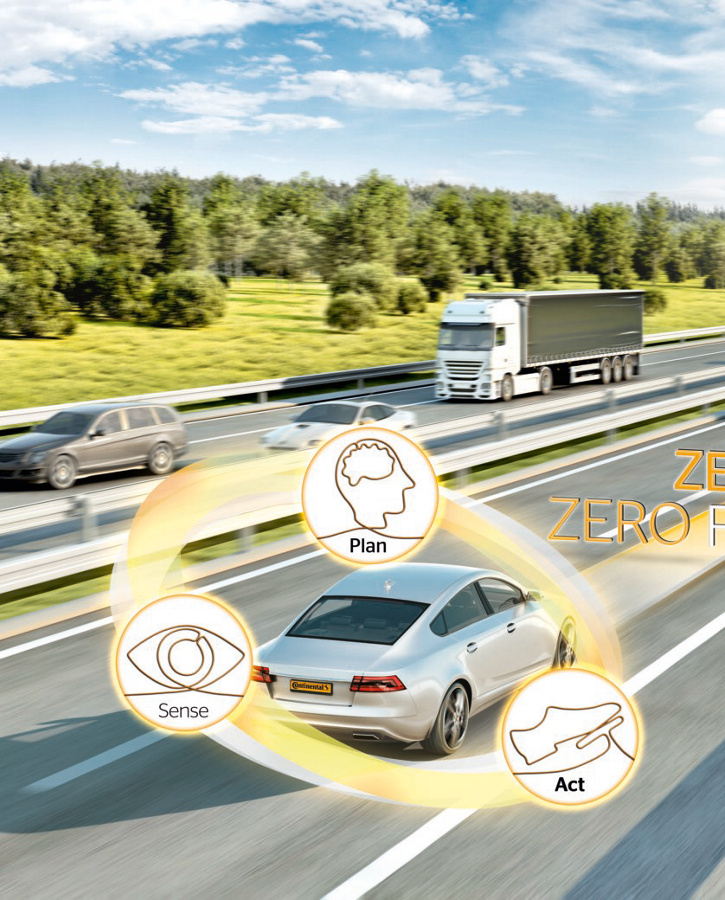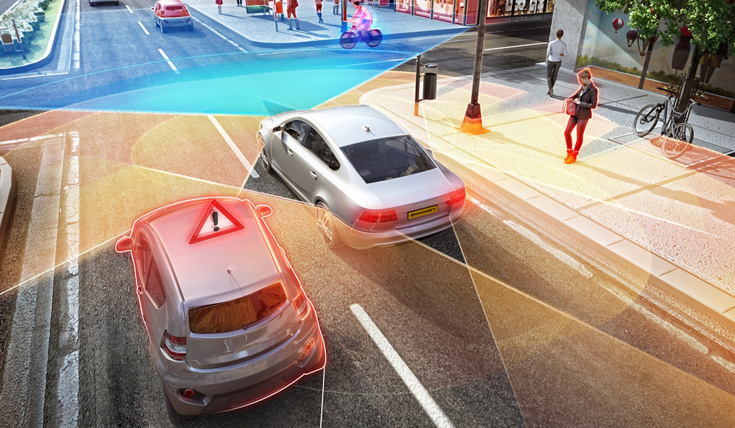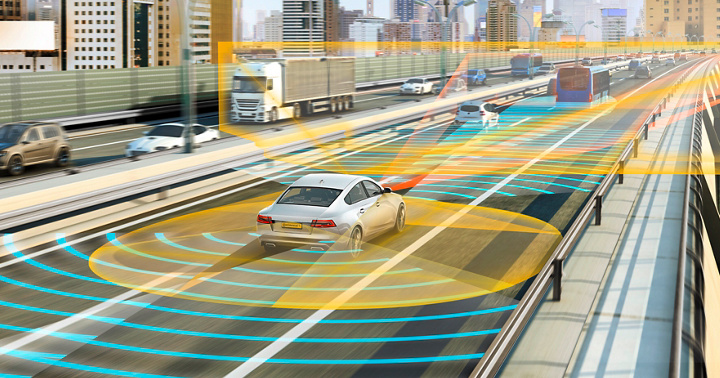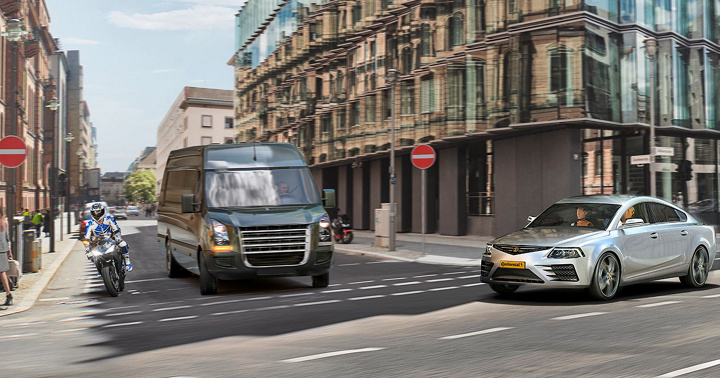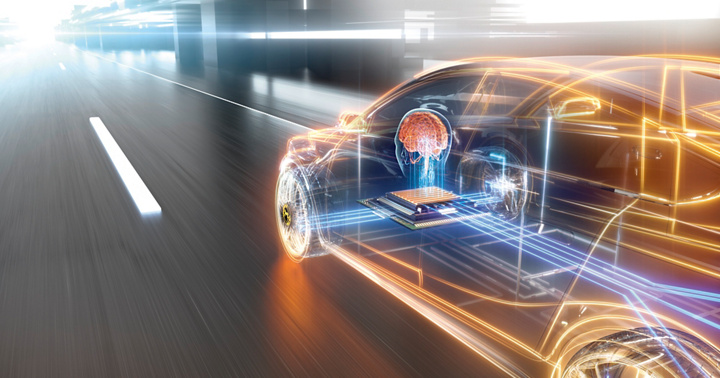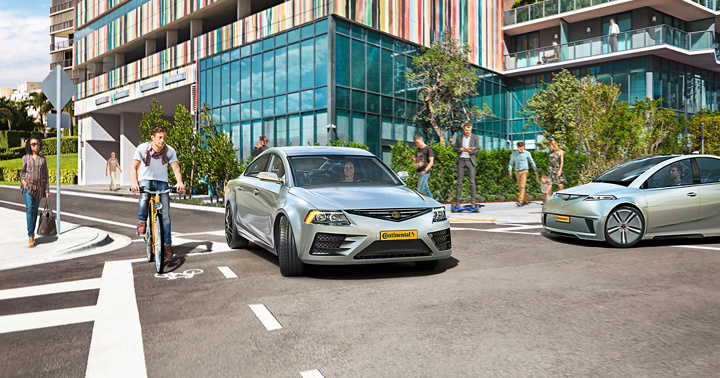a future without road traffic accidents. While it may sound like science fiction, it is actually feasible – by deploying safety technologies custom-tailored to every region in the world, and applying the findings of our in-house accident research.
Continental has an ambitious goal:
Galileo Galilei understood that the world turns on its axis. And we know that we turn with it – mostly riding on two, three or four wheels. We cruise through sunny landscapes in a camper van on summer vacation, we cheer on the cyclist “heroes of the road” in the Tour de France, and we take the bus to work every morning. This basic human urge for mobility has its origins in lands bordering the Black Sea. There, the wheel was invented around 4,000 BC as an aid to facilitate transportation: potters came up with the ingenious idea of equipping skid runners with small, rotating clay disks. It took almost 6,000 years for the wheel to evolve into the carriage, and another 400 years before the first motorized vehicle hit the road. But then things really took off: the transformation from the analog automobile to today’s networked, digitally driven vehicles took less than 30 years – in just the blink of an eye on the historical timeline, but a significant step indeed.
Yet, we also know that this human desire for mobility takes a tragic toll:
- every six seconds, a road accident occurs somewhere in the world in which someone dies or is seriously injured.
- This equates to more than 1.3 million road fatalities
- and up to 50 million serious injuries worldwide every year.
In our high-tech world, however, the goal must ultimately be: zero accidents.

Continental has therefore shouldered the commitment to “Vision Zero”: as one of the leading technology companies in the automotive industry, Continental is doing everything it can to continuously make mobility increasingly safer. Thanks to smart applications, software solutions and increasingly intelligent algorithms, cars are already viewed to be permanently connected “smartphones on wheels.” They run on sustainable electricity – and the artificially intelligent virtual assistant acts as a travel guide. Future vehicles will also glide autonomously through rush hour traffic. Yet, one goal above all must be achieved: to significantly reduce the number of traffic accident casualties.
”Vision Zero” is admittedly an ambitious goal. In Germany alone, more than 7,000 road accidents still occur every day, despite the many advanced driver assistance systems on board modern cars. That’s more than 1,060 injuries and nine deaths – every day. The number of road accident casualties has fallen in most European countries in recent years. But with the number of vehicles on the road steadily increasing year by year, the challenges do not get any easier. Since 2005, the number of cars registered for road use worldwide has almost doubled, to around 1.6 billion. In addition, more and more motorcycles, bicycles, electric bikes and e-scooters are sharing the limited space available in urban areas.
More cars, less space – yet still achieve zero accidents? How is that supposed to succeed? Continental pursues a clearly defined mobility strategy that always focuses on people. With a spirit of innovation and invention, the employees of this technology company work every day to advance new developments aimed above all else at helping to enhance safety in the complex world of mobility. Continental alone employs some 21,000 software and IT specialists – essential know-how for future innovations.
There are two key factors to achieving “Vision Zero” – both of equal importance.
On the one hand, new technological developments are constantly creating new opportunities. Today, intelligent algorithms are the new DNA of locomotion, and compact, high-performance computers are the control centers in an increasingly complex electrical and electronic architecture (E/E architecture). Continental is one of the leaders in developing the series production of such high-performance computers which basically control all electronic, digital and physical safety components in the vehicle. And Continental is also developing the corresponding driver-assistance systems.
The second key factor to enhancing road safety is accident research. In recent years, Continental has established its own in-house department for researching and analyzing traffic accidents worldwide. Only a deep understanding of all facets of the constantly changing accident situations makes it possible to develop customized safety solutions for every region and every market. This is crucial for reducing the number of accidents worldwide and moving ever closer to achieving “Vision Zero.”
Targeted technology solutions enable steadily greater progress to be made in road safety, bringing us closer to the goal of a world without accidents,”

Harald Feifel
Head of Accident Research at Continental
“People’s mobility behavior and accident statistics vary greatly from region to region. In Europe and the United States, the situation is less dramatic because many innovations that increase safety significantly have been introduced to vehicles there. The situation is different in emerging countries.” There, custom-tailored solutions are needed.
For example, in many Asian countries, simple, low-cost assistance systems for small motorcycles can significantly increase safety – more than any lane departure warning system for the generally fewer premium vehicles on the road there. This is because, in countries such as Vietnam or India, typical accidents involve collisions between motorcycles and between motorcycles and cars. Such accident scenarios rarely occur in Western countries, where, on the other hand, road intersections are one of the accident hotspots. According to a study by the University of Michigan Transportation Research Institute, almost one in three traffic fatalities in the United States alone occurs at an intersection – a situation that is more or less mirrored in many countries. The victims are often pedestrians and cyclists who, by their very nature, travel without the benefit of protective advanced driver assistance systems. The issue of “concealed road users” is crucial here, such as a cyclist hidden from motorists’ view by a truck. And the problem is not just limited to complex traffic situations at intersections. Pedestrians in particular are often obscured along the roadside by parked vehicles, trees or a truck pulling out of an exit. Situations like this require sensor systems that integrate the infrastructure – and also help to network vehicles with each other.
For example, a car’s sensors can use the principle of “collective perception” to communicate the positions of pedestrians or cyclists to the occupants of other vehicles who may otherwise overlook them.
This is also the starting point for Continental’s current research – and therefore also for product development: because systems in and on motor vehicles can protect pedestrians and cyclists. One example is the turn assist system for trucks, or brakes such as the EPB-Si electric parking brake into which various assistance functions can be integrated for greater safety, or assistance systems based on radar, lidar and cameras in combination with high-performance computers in vehicles, supplementing the infrastructure that detect and analyze traffic situations in real time. Continental relies on custom-tailored, practical and effective technology innovations supported by reliable data from its own accident research. So the world keeps on turning – and we turn with it: on our way to a future free of road traffic accidents, in which “Vision Zero” becomes a reality.
